Canada prefirio a al derecha.
El pais evito una crisis del sector vivienda y esta balanceando su presupuesto. Los electores aprueban la gestion.
El partido conservador ha prometido recortar el gasto, ha recortado los impuestos, han disminuido la regulacion de la industria telecom.
Canada Makes a Right Turn
The country skipped the housing bust and its budget is headed toward balance. Voters liked it
By DAVID GRATZER
In the winter of 1997, two Canadian conservatives wrote a stark essay arguing that conservative governance was an unlikely prospect for their country.
The governing Liberal Party was the most electorally successful party in the Western world, they noted, and Canada had become "a benign dictatorship." One of the authors had particular reason to be discouraged: Stephen Harper had just been railroaded out of the leadership of the party he helped found and appeared to be finished politically.
But Mr. Harper would stage a comeback, bringing the Conservatives to power first in 2006 and again in 2008 as leader of minority governments. Finally, on Monday, he scored the first non-Liberal majority in 23 years.
While his governance style has been quiet, Mr. Harper has established an impressive track record. He's cut Canada's value-added tax (the GST) as well as the corporate tax. He's deregulated the telecom industry. And despite strong pressure, he's only modestly given in to the temptation of stimulus spending.
The result is that the Conservative Party has credibly promised to cut spending further and to balance the federal budget by 2014. Moreover, based on International Monetary Fund projections, in 2015 Canada's debt-to-GDP ratio will be less than 30%, largely unchanged from the start of the recession—and a third of the projected U.S. debt-to-GDP ratio in that year.
Remarkably, Harper has accomplished these goals despite having to depend, at different points, on parliamentary votes from the Liberals (who publicly oppose tax relief), the socialist New Democratic Party (NDP), and the Bloc Quebecois (a separatist party led by a former Marxist). Now, after taming the deficit, he's promised a middle-class tax cut.
The real story in this election, though, is the near-death of the once-powerful Liberal Party of Canada. It placed third, winning just 19% of the popular vote—its worst showing in modern history. This outcome reflects something of a turning point for the nation.
Since the early 1960s, when the Liberals won the first of 10 victories in 13 elections, Canadian governance largely focused on welfare statism. Between 1963 and 1993, government spending soared to over 50% of GDP from 29%. In contrast, American government spending in the same years grew only about 6%, to 34%.
Prime Minister Stephen Harper after giving his victory speech in Calgary, Alberta, on Monday.
.The Liberals championed public pensions and free health care, favored tariffs, and implemented massive wealth transfers to poorer regions. The party cobbled together a coalition of students and professors, big business and big labor, old money and new immigrants—a coalition held together by subsidies, grants and government programs, with high taxes and large deficits to fund it all.
The Liberals still won back-to-back-to-back majorities (1993, 1997 and 2000), but the coalition began to fall apart. Less-wealthy Quebec opted for more overtly left-wing parties such as the Bloc Quebecois and the NDP, and an increasingly affluent Western Canada trended conservative. The Liberals now are confined to a handful of urban centers and a smattering of seats in Atlantic Canada.
The manufacturing-based Canada of the 1960s is largely gone. Today, much of the country is more prosperous, dynamic and resource-rich. The welfare state itself looks tired. Regional transfers meant to empower poorer regions have, in fact, trapped them in poverty.
Nowhere is the exhaustion of the welfare state more evident than in Canada's government-run health care. The system is plagued by long waiting lists for specialist consultations and diagnostic tests, and some four to five million Canadians can't find a family physician.
Provincial governments increasingly look to the private sector for relief. Regina, the mid-sized city in Saskatchewan that's considered the birthplace of socialized medicine, has contracted out CAT scanning—its three government scanners couldn't meet capacity, despite running seven days a week. In British Columbia, an estimated 50,000 patients a year are treated in private diagnostic centers (with public funding). Meanwhile, tens of thousands of Canadians opt to pay directly for private service in their own country or in the U.S.—unthinkable a decade or two ago.
Perhaps the ultimate undoing of the Liberal Party has been the rise in Canadian confidence. Canada boasts a dollar that trades over parity with the U.S. greenback, a housing sector that remains robust while America's is still a mess, and the strongest growth rate in the G-7 countries in 2011. The welfare state and its Liberal Party boosters seem less relevant. That's why Mr. Harper and his Conservative Party won big.
Dr. Gratzer, a physician born in Winnipeg, Manitoba, is a senior fellow at the Manhattan Institute.
Miercoles 04/05/11 Reporte del empleo privado ADP
Re: Miercoles 04/05/11 Reporte del empleo privado ADP
Los graficos del dia, 
.

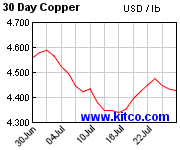
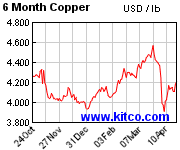
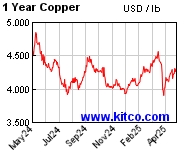
.

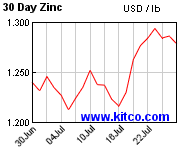
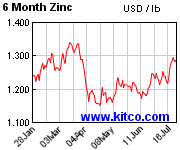
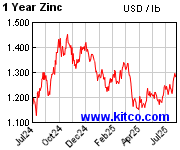
.

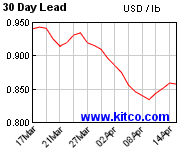
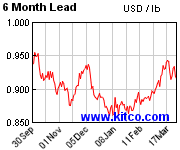
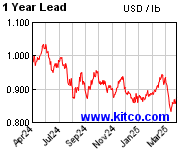
.
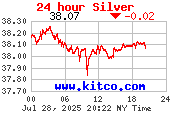
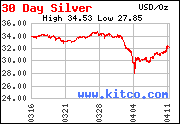
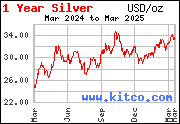
.
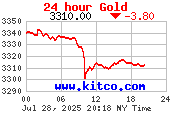

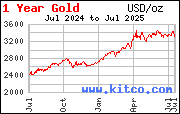
.
.




.




.




.



.



.
- Comodoro
- Mensajes: 980
- Registrado: Jue May 06, 2010 8:24 am
- Ubicación: LIMA
Re: Miercoles 04/05/11 Reporte del empleo privado ADP
Las Vegas Sand reporto debajo de lo esperado.
- admin
- Site Admin
- Mensajes: 165559
- Registrado: Mié Abr 21, 2010 9:02 pm
Re: Miercoles 04/05/11 Reporte del empleo privado ADP
8:05 a.m. EDT 05/04/11Treasurys Price Chg Yield %
2-Year Note -1/32 0.625
10-Year Note -4/32 3.264
* at close
8:04 a.m. EDT 05/04/11Futures Last Change Settle
Crude Oil 110.47 -0.58 111.05
Gold 1535.9 -4.5 1540.4
DJ Industrials 12731 -18 12749
S&P 500 1351.30 -0.80 1352.10
8:06 a.m. EDT 05/04/11Currencies Last (bid) Prior Day †
Japanese Yen (USD/JPY) 81.10 80.95
Euro (EUR/USD) 1.4869 1.4833
† Late Tuesday in New York.
2-Year Note -1/32 0.625
10-Year Note -4/32 3.264
* at close
8:04 a.m. EDT 05/04/11Futures Last Change Settle
Crude Oil 110.47 -0.58 111.05
Gold 1535.9 -4.5 1540.4
DJ Industrials 12731 -18 12749
S&P 500 1351.30 -0.80 1352.10
8:06 a.m. EDT 05/04/11Currencies Last (bid) Prior Day †
Japanese Yen (USD/JPY) 81.10 80.95
Euro (EUR/USD) 1.4869 1.4833
† Late Tuesday in New York.
- admin
- Site Admin
- Mensajes: 165559
- Registrado: Mié Abr 21, 2010 9:02 pm
Re: Miercoles 04/05/11 Reporte del empleo privado ADP
-5
Libor igual 0.27%
Coil down 110.53
El Asia cerro en rojo, Europa a la baja
Au, Ag, Cu down.
Euro up
Libor igual 0.27%
Coil down 110.53
El Asia cerro en rojo, Europa a la baja
Au, Ag, Cu down.
Euro up
- admin
- Site Admin
- Mensajes: 165559
- Registrado: Mié Abr 21, 2010 9:02 pm
Re: Miercoles 04/05/11 Reporte del empleo privado ADP
Los commodities siguen su caida
Copper May 04,07:59
Bid/Ask 4.1878 - 4.1906
Change -0.0740 -1.74%
Low/High 4.1782 - 4.2650
Charts
Nickel May 04,07:58
Bid/Ask 11.9957 - 12.0048
Change -0.2558 -2.09%
Low/High 11.9803 - 12.2588
Charts
Aluminum May 04,07:59
Bid/Ask 1.2320 - 1.2334
Change -0.0087 -0.70%
Low/High 1.2314 - 1.2475
Charts
Zinc May 04,07:58
Bid/Ask 1.0011 - 1.0020
Change -0.0130 -1.28%
Low/High 0.9956 - 1.0151
Charts
Lead May 04,07:58
Bid/Ask 1.1476 - 1.1489
Change -0.0015 -0.13%
Low/High 1.1393 - 1.1548
Charts
Copper May 04,07:59
Bid/Ask 4.1878 - 4.1906
Change -0.0740 -1.74%
Low/High 4.1782 - 4.2650
Charts
Nickel May 04,07:58
Bid/Ask 11.9957 - 12.0048
Change -0.2558 -2.09%
Low/High 11.9803 - 12.2588
Charts
Aluminum May 04,07:59
Bid/Ask 1.2320 - 1.2334
Change -0.0087 -0.70%
Low/High 1.2314 - 1.2475
Charts
Zinc May 04,07:58
Bid/Ask 1.0011 - 1.0020
Change -0.0130 -1.28%
Low/High 0.9956 - 1.0151
Charts
Lead May 04,07:58
Bid/Ask 1.1476 - 1.1489
Change -0.0015 -0.13%
Low/High 1.1393 - 1.1548
Charts
- admin
- Site Admin
- Mensajes: 165559
- Registrado: Mié Abr 21, 2010 9:02 pm
Re: Miercoles 04/05/11 Reporte del empleo privado ADP
ADP dijo que se crearon 179,000 empleos en el sector privado., los pequenios negocioso crearon 84,000 empleos. Menor a lo esperado
Las companias mas grandes solo crearon 11,000 empleos, los medianos 84,000, se crearon 207,000 en Marzo. Desaceleracion.
-19
Las companias mas grandes solo crearon 11,000 empleos, los medianos 84,000, se crearon 207,000 en Marzo. Desaceleracion.
-19
- admin
- Site Admin
- Mensajes: 165559
- Registrado: Mié Abr 21, 2010 9:02 pm
Re: Miercoles 04/05/11 Reporte del empleo privado ADP
EDC -2%
El indice del dolar
El sector servicios creo 179,000.
La economia americana no tiene un buen motor que la haga crecer. Y no lo va a tener hasta que Obama no salga del gobierno.
-4
El indice del dolar
El sector servicios creo 179,000.
La economia americana no tiene un buen motor que la haga crecer. Y no lo va a tener hasta que Obama no salga del gobierno.
-4
- admin
- Site Admin
- Mensajes: 165559
- Registrado: Mié Abr 21, 2010 9:02 pm
Re: Miercoles 04/05/11 Reporte del empleo privado ADP
Au (spot) up
SPOT MARKET IS OPEN
closes in 8 hrs. 53 mins.
May 04, 2011 08:22 NY Time
Bid/Ask 1537.60 - 1538.60
Low/High 1530.10 - 1540.20
Change +0.50 +0.03%
30daychg +103.10 +7.19%
1yearchg +365.40 +31.17%
Charts
SPOT MARKET IS OPEN
closes in 8 hrs. 53 mins.
May 04, 2011 08:22 NY Time
Bid/Ask 1537.60 - 1538.60
Low/High 1530.10 - 1540.20
Change +0.50 +0.03%
30daychg +103.10 +7.19%
1yearchg +365.40 +31.17%
Charts
- admin
- Site Admin
- Mensajes: 165559
- Registrado: Mié Abr 21, 2010 9:02 pm
Re: Miercoles 04/05/11 Reporte del empleo privado ADP
Euro up 1.4896
110.62,
Au up 1,541.10, ag down 41.14, futures cu down 4.18
110.62,
Au up 1,541.10, ag down 41.14, futures cu down 4.18
- admin
- Site Admin
- Mensajes: 165559
- Registrado: Mié Abr 21, 2010 9:02 pm
Re: Miercoles 04/05/11 Reporte del empleo privado ADP
Portugal de acuerdo con un rescate de $116 billones.
Aplied Materials compra Varian semiconductor.
Aplied Materials compra Varian semiconductor.
- admin
- Site Admin
- Mensajes: 165559
- Registrado: Mié Abr 21, 2010 9:02 pm
Re: Miercoles 04/05/11 Reporte del empleo privado ADP
71% dice que el alza de la gasolina los esta afectando.
La aprobacion del gobierno de obama a la baja.
La gasolina ha subdo mas del 40% desde el anio pasado.
La aprobacion del gobierno de obama a la baja.
La gasolina ha subdo mas del 40% desde el anio pasado.
- admin
- Site Admin
- Mensajes: 165559
- Registrado: Mié Abr 21, 2010 9:02 pm
Re: Miercoles 04/05/11 Reporte del empleo privado ADP
El indice de hipotecas subio 4%
- admin
- Site Admin
- Mensajes: 165559
- Registrado: Mié Abr 21, 2010 9:02 pm
Re: Miercoles 04/05/11 Reporte del empleo privado ADP
Tras un alza vertiginosa, la plata se derrumba
El precio del metal ha declinado 12,4% durante las últimas dos jornadas
Por Gregory Zuckerman y Carolyn Cui
Los precios de la plata sufrieron su peor caída en más de tres décadas, ante el temor de los inversionistas de que los crecientes costos de transacción podrían perjudicar a un mercado que ya exhibe señales de una posible burbuja.
La caída de US$3,50 o 7,6% en la cotización de la plata y de 1% en la del oro coincide con las ventas de ambos metales por parte del fondo de cobertura de George Soros y varias otras firmas de inversión de primera línea. Estos inversionistas decidieron liquidar posiciones después de acumular furiosamente metales preciosos durante la mayor parte de los últimos dos años.
Las ventas de algunas de las grandes firmas de Wall Street sugieren que la pronunciada alza de los metales preciosos que se extendió durante nueve meses podría estar revirtiéndose y entrando en un terreno peligroso.
.Numerosos inversionistas se han volcado al oro, la plata y el platino a medida que cae el dólar. La divisa estadounidense ha retrocedido 8% en lo que va del año frente a una canasta de monedas. Los metales preciosos a menudo sirven como una alternativa a las monedas. Más que el oro, muchos inversionistas más pequeños prefieren la plata, en parte porque su precio por onza es mucho más bajo. El martes el metal cerró en US$42,58 la onza.
La plata registró una baja de 12,4% en los últimos dos días. La del martes fue la peor caída en una jornada desde diciembre de 2008. Aún así, la plata acumula un aumento de cerca de 38% en lo que va del año. "No habíamos visto esta clase de volatilidad en décadas", dijo Robin Rodríguez, operador de metales de Charlottesville, estado de Virginia. Se acumularon ganancias de tal magnitud que algunos inversionistas están tomando ganancias, explicó Rodríguez, quien cree que el metal retomará su trayectoria alcista.
La plata subió 84% el año pasado y la semana pasada alcanzó su nivel más alto de los últimos 31 años al cerrar a US$48.70 la onza.
La semana pasada un fondo que cotiza en bolsa (ETF por sus siglas en inglés) que controla lingotes de plata, el iShares Silver Trust, fue el ETF más activo en el mercado estadounidense. Se volvió muy difícil pedir prestado acciones del fondo para luego vender, lo que necesitarían hacer los operadores pesimistas que apuestan a un descenso en los precios del metal.
Esto ayudó a sentar las bases para el declive, que comenzó en la tarde del domingo y tomó a muchos por sorpresa. Poco después de que comenzaran las operaciones electrónicas en la noche del domingo en Nueva York, las órdenes de venta inundaron el mercado y provocaron una caída de hasta 12% en el precio del metal. "Todos querían salir", dijo Richard Dinegan, ejecutivo de R.J. O'Brien, una firma de corretaje de Chicago.
Un factor que ha servido para echarle leña al fuego es que quienes invierten en plata en el mercado de futuros, en lugar de fondos que cotizan, deben dejar más dinero como garantía para respaldar sus posiciones.
CME, operador de commodities, ha incrementado los requerimientos de garantías, o márgenes como se dice en la jerga de Wall Street, tres veces en una semana. Esto, en efecto, encarece en 26% la compra y venta del metal. El último incremento fue anunciado el martes y entró en vigencia al final del día. Los inversionistas en futuros ahora necesitan colocar US$16.200 como garantía para operar un contrato de plata que al cierre del martes costaba US$212.880. El alza de estos costos reviste importancia porque muchos inversionistas apuestan con dinero prestado y se les aumentan los requisitos de márgenes se ven obligados a poner más dinero de su bolsillo o vender sus contratos de futuros.
La súbita cautela de los inversionistas que apostaban a un alza en los precios de los metales preciosos magnifica las preocupaciones del mercado. Durante casi dos años, el fondo de cobertura de Soros compró vorazmente oro y plata, transformándose en el séptimo tenedor de acciones del fondo de oro transado en bolsa SPDR Gold Shares. Otros inversionistas con trayectorias estelares, como John Burbank de Passport Capital y Alan Fournier de Pennant Capital, también acumularon metales preciosos, alentando a los inversionistas particulares a seguir su ejemplo. Recientemente, Soros, Burbank y Fournier han estado vendiendo posiciones vinculadas al oro y la plata.
En todo caso, una serie de inversionistas de alto perfil sigue teniendo enormes inversiones en oro y plata, en medio de la persistente preocupación respecto a la inflación y al dólar. El gestor de fondos de cobertura John Paulson dijo a los inversionistas el martes que el oro podría llegar a US$4.000 la onza en los próximos tres o cuatro años, si Estados Unidos y el Reino Unido inundan el mercado de dinero y el euro se desbanda. El oro cerró el martes a US$1.540 la onza troy.
El precio del metal ha declinado 12,4% durante las últimas dos jornadas
Por Gregory Zuckerman y Carolyn Cui
Los precios de la plata sufrieron su peor caída en más de tres décadas, ante el temor de los inversionistas de que los crecientes costos de transacción podrían perjudicar a un mercado que ya exhibe señales de una posible burbuja.
La caída de US$3,50 o 7,6% en la cotización de la plata y de 1% en la del oro coincide con las ventas de ambos metales por parte del fondo de cobertura de George Soros y varias otras firmas de inversión de primera línea. Estos inversionistas decidieron liquidar posiciones después de acumular furiosamente metales preciosos durante la mayor parte de los últimos dos años.
Las ventas de algunas de las grandes firmas de Wall Street sugieren que la pronunciada alza de los metales preciosos que se extendió durante nueve meses podría estar revirtiéndose y entrando en un terreno peligroso.
.Numerosos inversionistas se han volcado al oro, la plata y el platino a medida que cae el dólar. La divisa estadounidense ha retrocedido 8% en lo que va del año frente a una canasta de monedas. Los metales preciosos a menudo sirven como una alternativa a las monedas. Más que el oro, muchos inversionistas más pequeños prefieren la plata, en parte porque su precio por onza es mucho más bajo. El martes el metal cerró en US$42,58 la onza.
La plata registró una baja de 12,4% en los últimos dos días. La del martes fue la peor caída en una jornada desde diciembre de 2008. Aún así, la plata acumula un aumento de cerca de 38% en lo que va del año. "No habíamos visto esta clase de volatilidad en décadas", dijo Robin Rodríguez, operador de metales de Charlottesville, estado de Virginia. Se acumularon ganancias de tal magnitud que algunos inversionistas están tomando ganancias, explicó Rodríguez, quien cree que el metal retomará su trayectoria alcista.
La plata subió 84% el año pasado y la semana pasada alcanzó su nivel más alto de los últimos 31 años al cerrar a US$48.70 la onza.
La semana pasada un fondo que cotiza en bolsa (ETF por sus siglas en inglés) que controla lingotes de plata, el iShares Silver Trust, fue el ETF más activo en el mercado estadounidense. Se volvió muy difícil pedir prestado acciones del fondo para luego vender, lo que necesitarían hacer los operadores pesimistas que apuestan a un descenso en los precios del metal.
Esto ayudó a sentar las bases para el declive, que comenzó en la tarde del domingo y tomó a muchos por sorpresa. Poco después de que comenzaran las operaciones electrónicas en la noche del domingo en Nueva York, las órdenes de venta inundaron el mercado y provocaron una caída de hasta 12% en el precio del metal. "Todos querían salir", dijo Richard Dinegan, ejecutivo de R.J. O'Brien, una firma de corretaje de Chicago.
Un factor que ha servido para echarle leña al fuego es que quienes invierten en plata en el mercado de futuros, en lugar de fondos que cotizan, deben dejar más dinero como garantía para respaldar sus posiciones.
CME, operador de commodities, ha incrementado los requerimientos de garantías, o márgenes como se dice en la jerga de Wall Street, tres veces en una semana. Esto, en efecto, encarece en 26% la compra y venta del metal. El último incremento fue anunciado el martes y entró en vigencia al final del día. Los inversionistas en futuros ahora necesitan colocar US$16.200 como garantía para operar un contrato de plata que al cierre del martes costaba US$212.880. El alza de estos costos reviste importancia porque muchos inversionistas apuestan con dinero prestado y se les aumentan los requisitos de márgenes se ven obligados a poner más dinero de su bolsillo o vender sus contratos de futuros.
La súbita cautela de los inversionistas que apostaban a un alza en los precios de los metales preciosos magnifica las preocupaciones del mercado. Durante casi dos años, el fondo de cobertura de Soros compró vorazmente oro y plata, transformándose en el séptimo tenedor de acciones del fondo de oro transado en bolsa SPDR Gold Shares. Otros inversionistas con trayectorias estelares, como John Burbank de Passport Capital y Alan Fournier de Pennant Capital, también acumularon metales preciosos, alentando a los inversionistas particulares a seguir su ejemplo. Recientemente, Soros, Burbank y Fournier han estado vendiendo posiciones vinculadas al oro y la plata.
En todo caso, una serie de inversionistas de alto perfil sigue teniendo enormes inversiones en oro y plata, en medio de la persistente preocupación respecto a la inflación y al dólar. El gestor de fondos de cobertura John Paulson dijo a los inversionistas el martes que el oro podría llegar a US$4.000 la onza en los próximos tres o cuatro años, si Estados Unidos y el Reino Unido inundan el mercado de dinero y el euro se desbanda. El oro cerró el martes a US$1.540 la onza troy.
- admin
- Site Admin
- Mensajes: 165559
- Registrado: Mié Abr 21, 2010 9:02 pm
¿Quién está conectado?
Usuarios navegando por este Foro: No hay usuarios registrados visitando el Foro y 24 invitados
